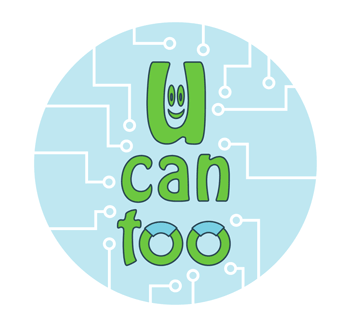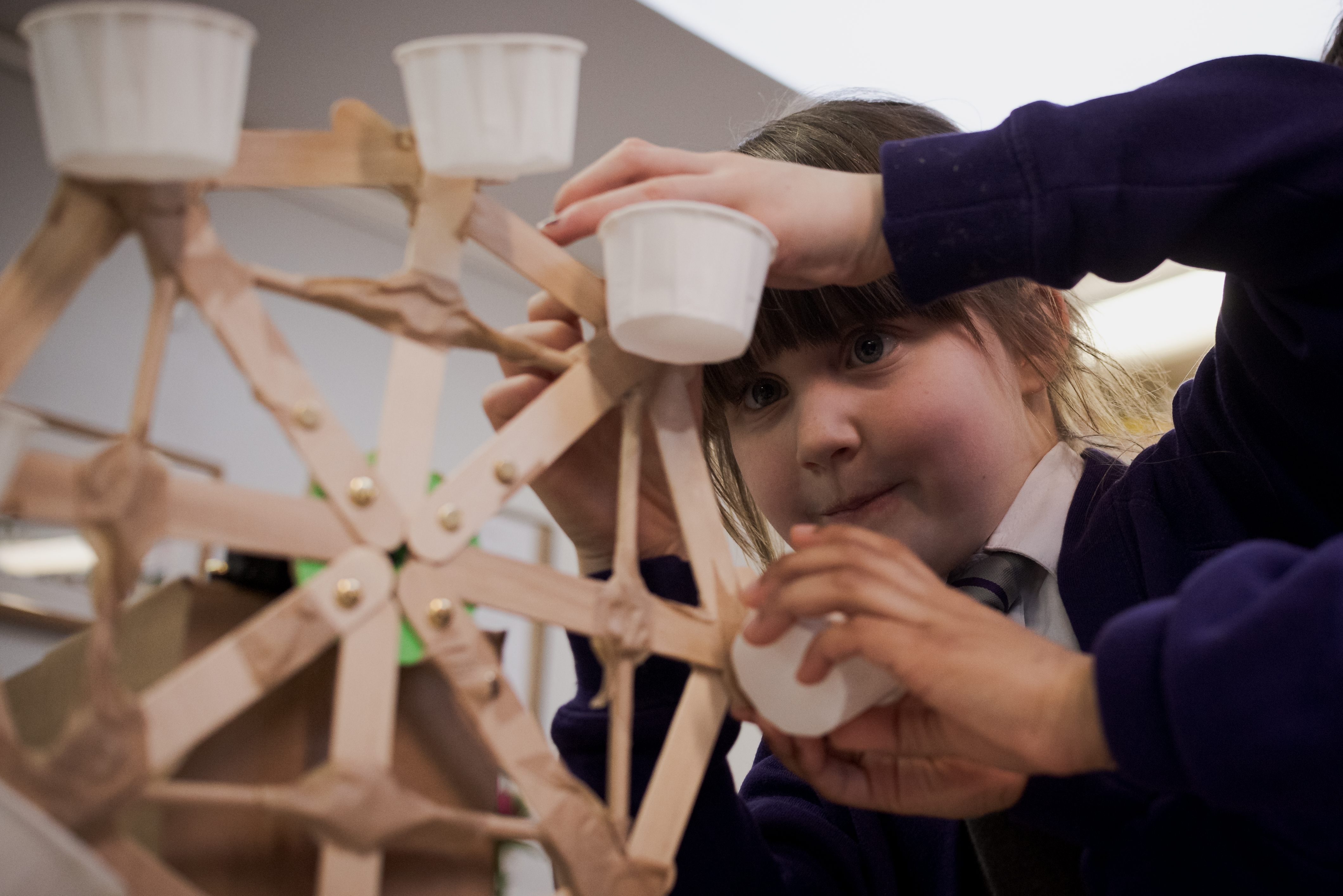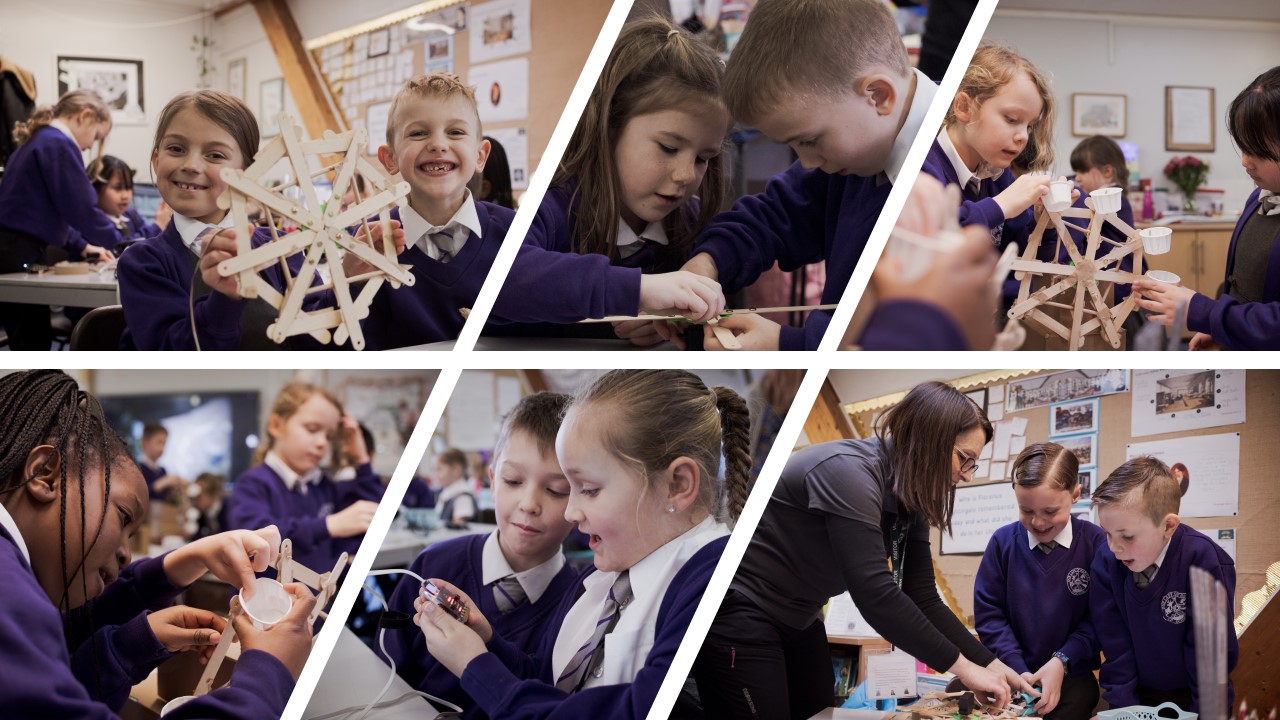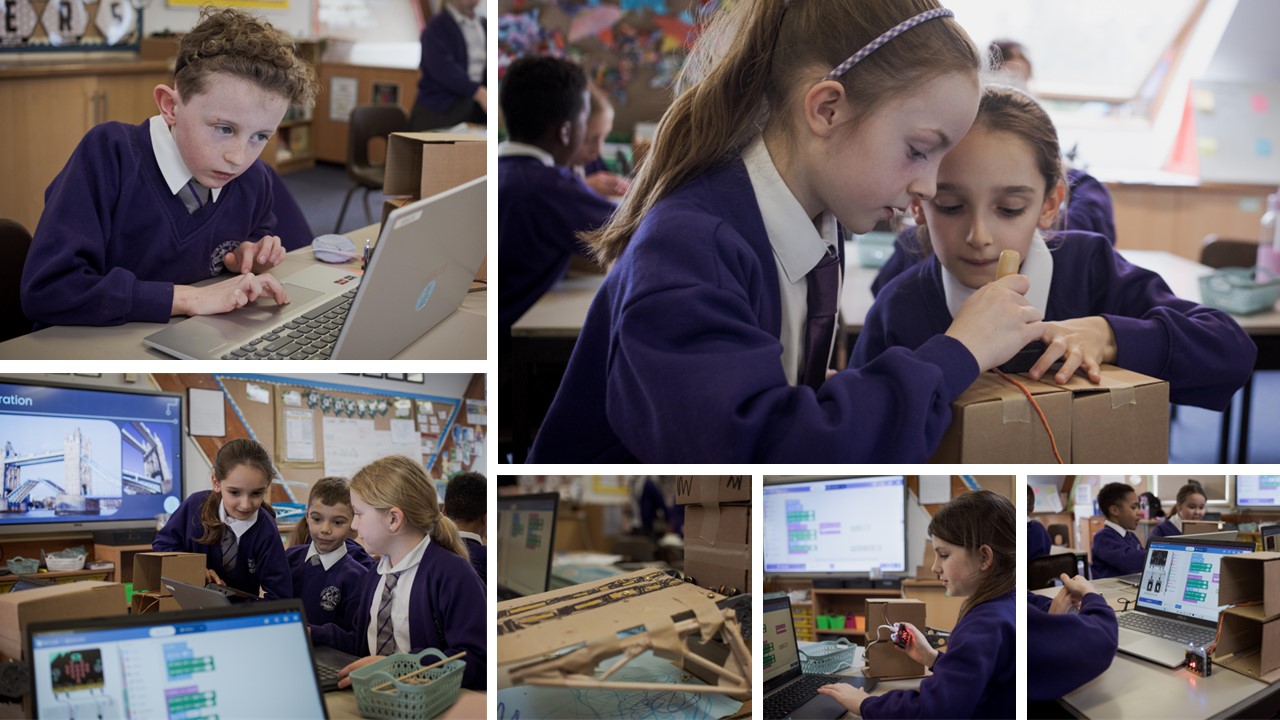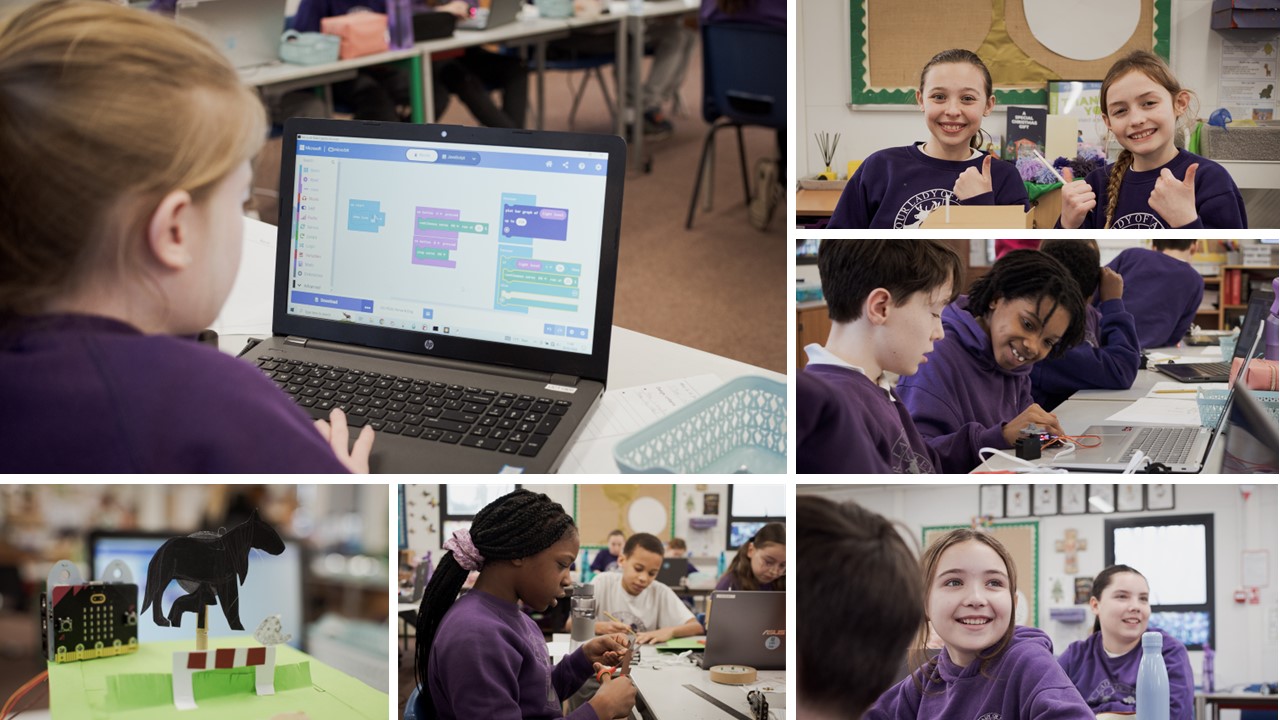Last month, we had the pleasure of working with Our Lady Hartley Primary School on an exciting project. They were looking for bespoke workshops to combine aspects of their Computing and Design Technology curriculums. Combining two subjects in this way allowed them to keep costs down for each department by combining subject budgets, whilst achieving curriculum aims for both subjects.
The main context for the workshops came from their D&T work, for which they follow the Kapow curriculum. We designed and ran the following three bespoke workshops:
- Year 2 - micro:bit-controlled Ferris wheels
- Year 4 - micro:bit-controlled Tower Bridge replicas
- Year 6 - micro:bit-controlled light-activated, literacy-linked automatons
Year 2
From a D&T perspective, year 2 were required to build their own Ferris wheels, and from the computing curriculum, they needed to be able to create simple programs. To achieve these objectives, pupils built their Ferris wheels from cardboard boxes, lolly sticks, and sauce pots. They considered how to make strong structures, using triangles and the need for pods to remain continuously upright while the wheel travels around. They then attached the main wheel to a servo motor, connected to a micro:bit. Pupils programmed their micro:bits to spin when the A button is pressed and stop when the B button is pressed. The children needed to consider and control the speed of their Ferris wheels during the production too, as you can see, not only did the children really enjoy the day, they were really focussed on their work too:
Year 4
The year 4 children had been learning about bridges in D&T and for this particular session, the school had asked for a workshop to recreate Tower Bridge with a mechanism to raise and lower the bridge just like the real thing! On the day, children worked as pairs in larger groups of four, each pair making half a bridge, each half was then joined with the other pair’s half-bridge to create a complete model of Tower Bridge. Like the year 2 workshop, the children programmed their micro:bits to control two servos to raise and lower their side of the bridge. With year 4, the programming for this was a little more complicated as they were using positional servos which meant they needed to consider how many degrees the bridge should move to get it to the correct positions and delays to allow boats to pass under the bridge. Some even extended their programs slowing their servos motion by using variables and maths.
Year 6
In year 6, the children had been reading the book, The Boy, the Mole, the Fox and the Horse by Charley Mackesy, so we combined this theme into their automatons. The internal workings of the automaton was fairly standard, utilising a cam and follower mechanism. We provided a method to connect the mechanism to a servo enabling the automatons to run automatically. As this workshop was with year 6 children, we needed to ensure the computing aspect covered more complex programming, including selection (if…then statements). In this workshop, pupils used the light sensor on the micro:bit as the input with pupils triggering the automatons by waving their hand in front of the device. Pupils also learnt how to find the ambient light level to establish a suitable threshold for triggering the motion.
The computing aspect for each of these workshops was in the use of physical computing, programming a micro:bit to control servo motors within each build. The programming skills used for each year group were aligned with the Computing National Curriculum applying the following aspects:
- Year 2 children were able to create and debug simple programs to make their Ferris wheels turn and stop using the inputs and outputs on the micro:bit.
- Year 4 children focused on sequence in their code as well as utilising their maths knowledge of time and angles to include pauses to ensure the bridge moved to the correct position and remained there for a set amount of time.
- Year 6 children focused on using a sensor as an input and selection within their code to control the movement of their automatons.
We very much enjoyed generating a new set of bespoke workshops, particularly with the challenge of combining aims from two subjects in one day’s outcome.
Please get in touch if you would like to run something similar in your school or explore bespoke workshops for your setting. We already offer workshops that combine computing with a range of other subjects or to fit in with a particular topic; popular options include science and art. Combining subject budgets really helps to spread the cost of workshops in school; you can find out more about this here.
